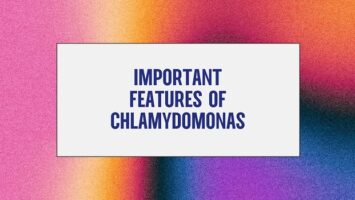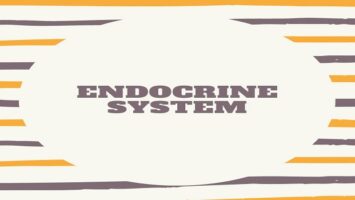Short Note on Gonium:
Gonium pectorale is the simplest of the colonial Volvocales. The colony or coenobium consists of a sixteen-celled plate that is square in surface view but thin and slightly curved in side view as shown below. It comprises four central and twelve peripheral cells, each having the Chlamydomonas structure. The cells are connected by slight protrusions so that triangular spaces are formed between them, while the centre is made up of a squarish area of mucus. The whole coenobium is embedded in mucilage which possesses a firm boundary layer. The peripheral cells are inclined at an angle to the vertical axis of the plate, and each possesses a pair of long equal flagella which are directed towards the convex surface. When in motion the whole plate spins round on its axis and moves with the convex surface forwards.

In asexual reproduction all the sixteen cells of the colony divide simultaneously, each firing a daughter colony of sixteen cells. The divisions of each cell are all longitudinal. After division the daughter protoplasts in the mother cell in the form of a bowl or curved plesh, the Plakea. If a cell of a Gonium colony is artificially detached, it at once divides up so as to form a new colony of normal size.
Sexual reproduction is by means of naked isogametes which are produced in sexual coenobia of small size. G. pectorale is anisogamous. The gametes are liberated from the coenobium by the breakdown of the surrounding membrane. Gamete from the same colony do not fuse together, in fact, there appears to be a physiological difference between these sexual coenobia the plus and minus strains, although they all look alike.
Gametes from one type of coenobium fuse only with those of another. The zygote so formed is at first quadriflagellate; it comes to rest and rounds off. A membrane is formed and a prolonged period of rest may follow. On germination, the zygote divides to produce four cells which form a plate, and from each of these, a fresh sixteen-celled coenobium is produced. t is probable that the reduction division occurs during the first two divisions of the zygote, for it has been shown that there is a sexual segregation at this stage whereby two of the daughter coenobia are sexually distinct from the other two.









Comments (No)